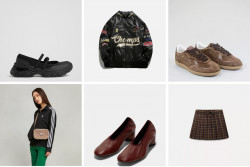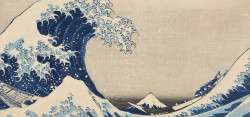
December 20, 2011
Noh Masks and Costumes from the Mitsui Collection
Get into Noh, face first
By Metropolis
Originally published on metropolis.co.jp on December 2011

Noh is the cricket of the theater world. Like that quaint sport it is an esoteric and ancient pastime that has odd rules and occupies time in a way that seems somewhat gratuitous. Full performances can last all day. It is nevertheless one of the key portals of Japanese culture and something that the serious fan of Japanese culture should not neglect.
Perhaps an easy way to tick this cultural box is to visit “Noh Masks and Costumes from the Mitsui Collection: Profound and Subtle Beauty” at Nihonbashi’s Mitsui Memorial Museum. The exhibition presents an impressive amount of accoutrements from the art, including 54 masks, Noh costumes, instruments, and song books used in the performances.
In Noh theatre, which is all-male, masked actors play the main male and female roles, with lesser parts delegated to unmasked actors. This is something that is not as alien to Western culture as it may seem. The ancient Greek theater, the source of Western thespian traditions, also featured masked actors.
Noh masks are traditionally carved from Japanese cypress wood and get their trademark shiny white pallor from a crushed seashell coating, which gives them a slightly spooky appearance useful for playing ghosts. Other roles include deities and vengeful gods, usually depicted as horned demons. Such roles reveal the strong streak of the supernatural which runs through the art.
Although it might be thought that wearing a mask would reduce an actor’s ability to be expressive, Noh actors have a number of tricks to compensate, including the use of gesture, demeanor, and dance. Some masks, like the Okina (venerable old man) mask, even have moving parts. One of the most interesting means of creating expression however is the tilting of the masks. Some of these—especially the magojiro (maiden) masks—have been designed to show different emotional states from different angles. With a subtle inclination of few degrees or a change of lighting, a mask that appeared to be smiling can miraculously change its expression to show fear or sadness. Just to emphasize that the world of Noh works on a different timescale from everything else, the exhibition also includes the first showing of a 1991 donation of eight masks and 100 volumes of Noh song books from the master Noh mask carver Kazumichi Hashioka.
Mitsui Memorial Museum, until Jan 28 (listing).







